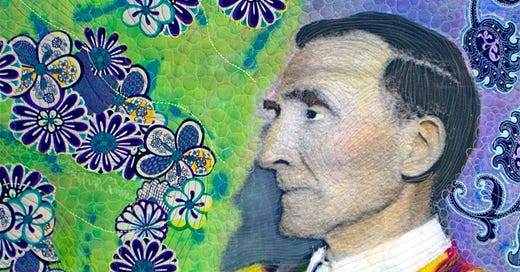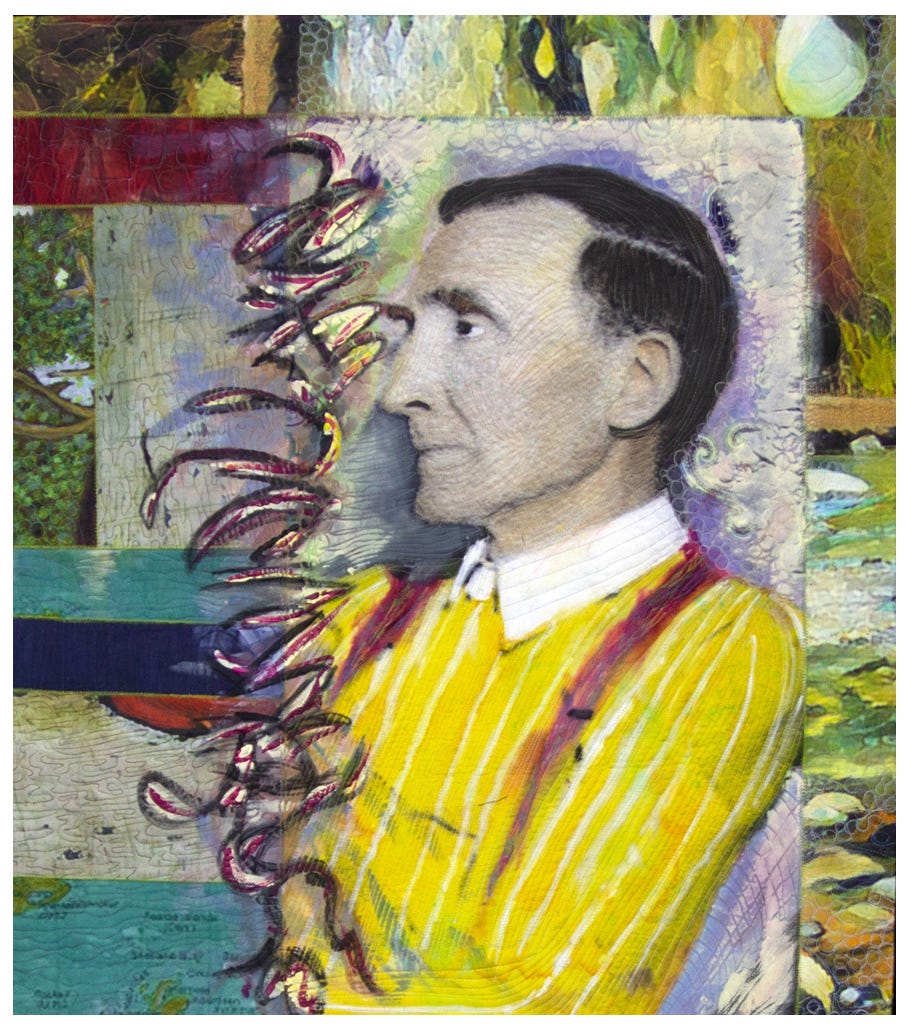The “Thin Man” is a series of movies that I enjoy watching from time to time. These films feature the characters Nick and Nora Charles. Nick is the detective and his wife a wealthy heiress. He constantly drinks but magically maintains his wit and analytic skills. She adores him. The characters were so well written their appeal has lasted decades. The writer, Dashiell Hammett, wrote just five novels, short stories, and screenplays. His influence as the creator of the hard boiled detective; impressed generations. Three of his five novels are listed among the top 100 crime novels of all time.
I discovered Hammett after I saw a movie with Jane Fonda called Julia. The movie was based on a chapter in a book of remembered portraits of real characters in the life of the author Lillian Hellman. Hellman was the longtime partner of Hammett. She was a playwright, who had major success on Broadway and later on the screen with The Children's Hour, The Little Foxes and its sequel Another Part of the Forest, Watch on the Rhine, The Autumn Garden, and Toys in the Attic.
Both Lillian Hellman and Hammett were blacklisted by the American Film Industry after refusing to appear before the House Committee on Un-American Activities . Lillian denied she was a “real” communist and continued to work on broadway. Dashielle Hammett was a dedicated advoate for socialist and liberal policy. He spent time in jail for refusing to named anyone in the communist movement. After that period he abandoned writing completely and devoted himself to activism.
For most of his life he was, like the character Nick Charles; a very thin man. During most of his life he had chronic conditions leading to his poor health including TB and emphysema. In the last four years of his life Lillian took care of him. He died of lung cancer in 1961.
As a highschool senior I remember seeing the movie Julia and being captivated by the story. I started reading about Hellman and then her partner Dashiell Hammett. Years latter I learned that the story of Julia was probably a fiction created by Hellman based on another person’s story, but by that time I was already a fan of her plays and of characters created by Hammett for the silver screen.
Results from an AI search of how does the Brain Make Connections:
The brain makes connections through synapses, which are the links between nerve cells. Neurons become interconnected through dendrites, which are extensions of the cell body that receive signals from other neurons, and axons, which are extensions from the neuron that can carry signals to other neurons.
While this answer might explain the mechanism for making connections, it doesn’t explain the magic of making an unexpected leap between ideas that become something new. I find these random (sometimes impulsive) connections a source of inspiration in the studio.
That unexpected leap happened when I grabbed a rotary cutter and sliced up a portrait of my grandfather in the early days of the pandemic lockdown. It was the first piece in an ongoing series I am calling fragments.
The portrait was of my paternal grandfather Thomas Houston Lowers toward the end of his life. He would have been sitting in the family home in Hollywood. The background was floral designs on a green and violet background. The figure was in a yellow shirt and suspenders seated in profile.
He looked so frail. His likeness reminded me of my own father who weighed less than 100 pounds when he passed. The portrait did not express anything other than a portrait of a very thin man seated against a garish background. I thought about tossing it in the bin, when a connection popped into my brain out of the blue: Thin Man.
Although he was thin at the end of his life, like all people his life was more than his last days. He had a complex story that wasn’t referenced in the composition. I looked through the closet where I store my portfolio. There I found a piece which featured a live oak in the courtyard of the Alamo. Another connection was made! My grandfather’s middle name was Houston, after General Sam Houston.
Houston was born in Virginia just across the border from the country in West VIrginia where my grandfather was born. Like my grandfather, Houston was descended from Scottish settlers. Houston began his career in the army fighting in the War of 1812. (In the family home we had a sword from the war.) Houston had a career as a politician eventually ending up in Texas where he fought in the Texas Revolution. After winning independence from Mexico Houston became Governor and was elected President of Texas before it became a State.
I cut up the Alamo’ courtyard of a museum documenting the Texas Revolution. I cut out sections of the branches of the live oak to frame the cropped image of my grandfather. I painted out the background. The process continued as I found a landscape with a creek which looked like the creeks in Colorado where my father learned to fly fish with his father. This also became part of the frame, along with the blue of the pacific ocean.
As I was creating this new portrait, I was giving into the magic of connections. Hollywood, Houston, Colorado creeks, and color of the ocean. As I move through this series by looking at old work that needs something beyond my initial attempt at completion; I am giving into the random connections that pop into my head. Maybe its a color, a subject, something read, a movie,a podcast, or a memory.
I love this quote by Charles Eames
Eventually everything connects - people, ideas, objects. The quality of the connections is the key to quality…..
Eames was a creative powerhouse. He made groundbreaking contributions in the fields of architecture, furniture design, industrial design, manufacturing and the photographic arts. His gift was an ability to not see limitations, instead he saw the connections. As an artist what I make is always a connecting to myself and the larger world.
Until Next Time…….







